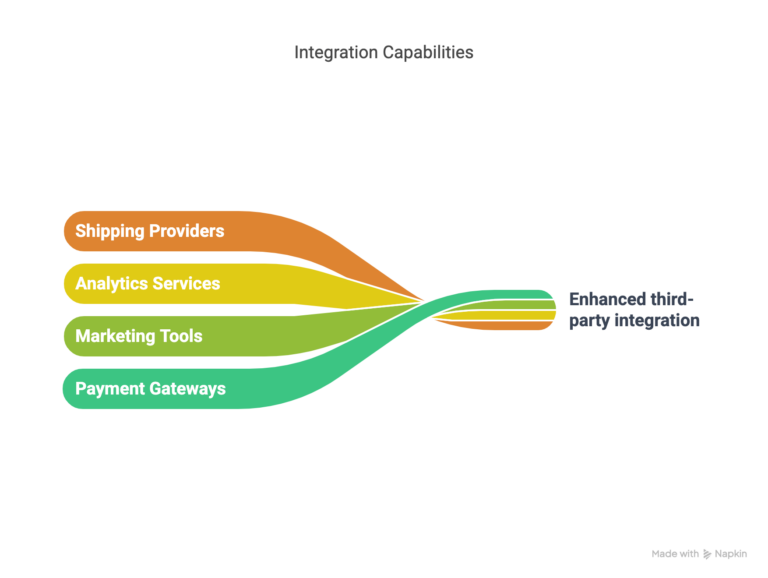Greetings! I'm Aneesh Sreedharan, CEO of 2Hats Logic Solutions. At 2Hats Logic Solutions, we are dedicated to providing technical expertise and resolving your concerns in the world of technology. Our blog page serves as a resource where we share insights and experiences, offering valuable perspectives on your queries.
QUICK SUMMARY
Scalability: Handle high-traffic situations with custom caching and CDN strategies
Frontend Freedom: Build with any modern technology stack
Powerful APIs: Well-documented, comprehensive API coverage
Performance Control: Optimize user experience without platform constraints
Integration Flexibility: Connect with best-of-breed services easily
Are you a developer looking to build flexible, high-performance e-commerce experiences without traditional constraints? You’re not alone.
Many developers are turning to headless commerce solutions, and BigCommerce is emerging as a favorite platform in this space.
At 2Hats Logic Solutions, we have helped numerous businesses transition to headless architecture. We have witnessed firsthand how BigCommerce’s headless approach revolutionizes what’s possible in e-commerce development.
Let’s dive into why developers increasingly choose BigCommerce as their preferred headless commerce solution.
What is Headless BigCommerce?
Before we get into the specifics, let’s clarify what we mean by “headless.”
In a traditional e-commerce setup, the frontend (what customers see) and the backend (inventory management, checkout processes, etc.) are tightly coupled. This limits flexibility and often forces developers to work within confining templates.
Headless commerce separates these layers. The “head” (frontend presentation) is decoupled from the “body” (backend commerce functionality), connected only through APIs.
BigCommerce’s headless approach gives developers the freedom to build custom frontends using any technology they prefer while leveraging BigCommerce’s robust backend infrastructure.
Why Developers Are Falling in Love with Headless BigCommerce
Developers are increasingly gravitating toward headless BigCommerce because it offers a perfect blend of powerful backend commerce functionality with the freedom to create custom, high-performance frontends using any modern technology stack they prefer.
1. Ultimate Frontend Flexibility
The most compelling reason developers love headless BigCommerce is the freedom to build storefronts with their preferred tech stack.
Real-World Example: At 2HatsLogic, we helped a fashion retailer migrate from a traditional BigCommerce store to a headless architecture using Next.js. The result? Page load times decreased by 60%, and mobile conversion rates increased by 35%.
With headless BigCommerce, you can build with:
- React
- Vue.js
- Angular
- Next.js
- Nuxt.js
- Gatsby …or any other modern JavaScript framework.
Struggling with frontend limitations in your current BigCommerce setup?
2. Robust API-First Approach
BigCommerce’s comprehensive API suite is a developer’s dream.
Their APIs are:
- Well-documented
- RESTful
- GraphQL-supported
- Consistently updated
This means you can access virtually every aspect of the e-commerce engine programmatically, from product information to customer data, inventory, and order management.
Pro Tip: When working with BigCommerce APIs, use the GraphQL API for complex data fetching scenarios. It reduces over-fetching and under-fetching issues that sometimes occur with REST APIs, resulting in more efficient applications.
3. Integration Capabilities
Unlike some platforms that make third-party integrations feel like an afterthought, BigCommerce embraces the ecosystem approach.

Developers can easily connect:
- Headless CMSs like WordPress or Sanity
- Search solutions like Algolia
- Payment gateways beyond the standard offerings
- Custom ERP systems
- PIM solutions
4. Performance Optimization
With headless BigCommerce, performance optimization is in your hands.
You can:
- Implement advanced caching strategies
- Utilize CDNs effectively
- Optimize for Core Web Vitals without platform limitations
- Create progressive web apps for mobile
We recently worked with an electronics retailer who saw their Google PageSpeed score improve from 65 to 94 after migrating to a headless BigCommerce setup with proper optimization.
Technical Deep Dive: Working with BigCommerce APIs
Let’s look at what makes BigCommerce’s API ecosystem particularly developer-friendly.
API Types Available
| API Type | Use Case | Developer Benefits |
| Storefront API | Building custom shopping experiences | Real-time data, customizable checkout |
| Management API | Administrative operations | Automate store management |
| Webhooks | Event-driven architecture | Build reactive systems |
| GraphQL API | Efficient data fetching | Request only what you need |
Solving Real Developer Challenges
Let’s address some common pain points developers face and how headless BigCommerce helps solve them.
Challenge 1: Balancing Business Needs with Technical Preferences
Traditional platforms often force developers to compromise on technology choices to accommodate business requirements.
Solution: Headless BigCommerce lets developers use modern frameworks and tools while still leveraging enterprise-grade commerce functionality.
Challenge 2: Scaling During High-Traffic Events
Many e-commerce platforms struggle during sales events or product launches.
Solution: With headless BigCommerce, you can implement advanced caching strategies and scaling solutions on the frontend while BigCommerce’s robust infrastructure handles the backend load.
Challenge 3: Complex Customization Requirements
Solution: Instead of being limited by template systems, headless development allows for precise customization of every user interface element and interaction pattern.
Getting Started with Headless BigCommerce Development
If you’re ready to explore headless BigCommerce, here’s a quick path to get started:
- Create a BigCommerce developer account
- Sign up at developer.bigcommerce.com
- Familiarize yourself with the API documentation
- The Developer Documentation is comprehensive
- Choose your frontend technology
- Consider frameworks with good SSR capabilities like Next.js
- Set up API credentials
- Create store-level API accounts with appropriate permissions
- Start with a small proof-of-concept
- Build a simple product listing before tackling the full store
Pro Tip: When building headless stores with BigCommerce, always implement proper API caching strategies from the beginning. This will save you performance headaches later as your store grows.
Ready to Transform Your E-Commerce Development?
Headless commerce represents the future of e-commerce development, offering unprecedented flexibility, performance, and customization capabilities. BigCommerce has positioned itself as a leading choice for developers seeking this modern approach.
At 2HatsLogic, we’ve helped numerous businesses successfully implement headless BigCommerce solutions that have transformed their online presence and significantly improved key performance metrics.
Whether you’re looking to migrate an existing store to a headless architecture or build a new cutting-edge e-commerce experience, we’re here to help.
Contact our team for a free consultation and discover how we can help bring your vision to life.
FAQ
Does going headless with BigCommerce require additional licensing costs?
BigCommerce's API access is included in their standard plans, but you might need to factor in hosting costs for your frontend application and potentially higher-tier plans for advanced API usage.
How does headless BigCommerce compare to other headless commerce platforms?
BigCommerce offers one of the most comprehensive API sets in the industry, combined with the advantage of not having to manage your own commerce infrastructure, unlike some other headless solutions.
Will I lose any functionality by going headless?
You'll need to re-implement some features on your custom frontend, but virtually all BigCommerce functionality is accessible via APIs. The tradeoff is between out-of-the-box convenience and customization freedom.
How do updates to the BigCommerce platform affect headless implementations?
One of the advantages of headless architecture is that backend updates generally don't break your frontend implementation as long as the APIs remain backward compatible, which BigCommerce maintains well.
Is headless BigCommerce suitable for small businesses?
While it's most beneficial for mid-market and enterprise businesses with specific needs, even smaller businesses with unique requirements or high growth expectations can benefit from the scalability and flexibility of headless architecture.

Related Articles







